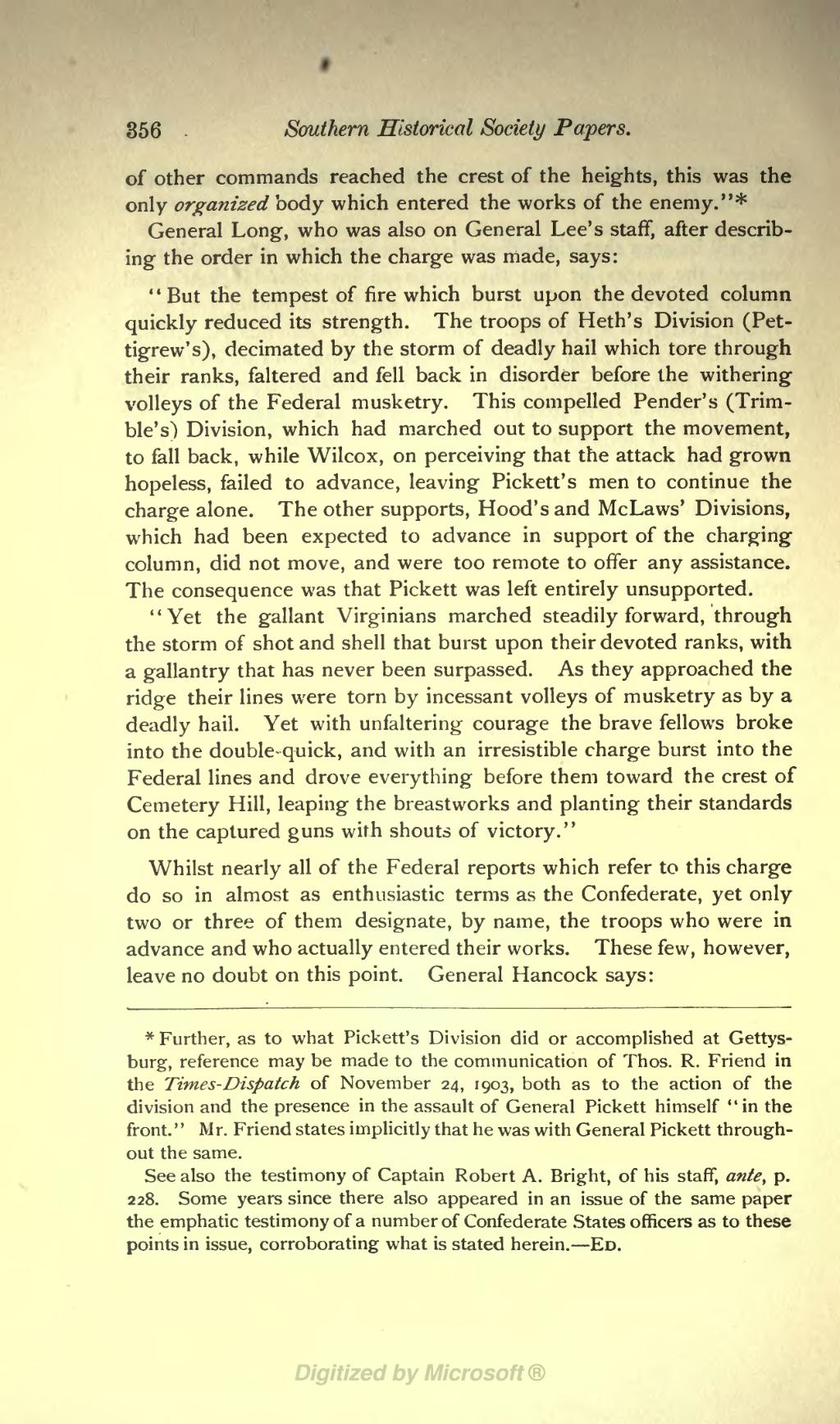356 Southern Historical Society Papers.
of other commands reached the crest of the heights, this was the only organized body which entered the works of the enemy."*
General Long, who was also on General Lee's staff, after describ- ing the order in which the charge was made, says:
" But the tempest of fire which burst upon the devoted column quickly reduced its strength. The troops of Heth's Division (Pet- tigrew's), decimated by the storm of deadly hail which tore through their ranks, faltered and fell back in disorder before the withering volleys of the Federal musketry. This compelled Fender's (Trim- ble's) Division, which had marched out to support the movement, to fall back, while Wilcox, on perceiving that the attack had grown hopeless, failed to advance, leaving Pickett's men to continue the charge alone. The other supports, Hood's and McLaws' Divisions, which had been expected to advance in support of the charging column, did not move, and were too remote to offer any assistance. The consequence was that Pickett was left entirely unsupported.
"Yet the gallant Virginians marched steadily forward, through the storm of shot and shell that burst upon their devoted ranks, with a gallantry that has never been surpassed. As they approached the ridge their lines were torn by incessant volleys of musketry as by a deadly hail. Yet with unfaltering courage the brave fellows broke into the double-quick, and with an irresistible charge burst into the Federal lines and drove everything before them toward the crest of Cemetery Hill, leaping the breastworks and planting their standards on the captured guns with shouts of victory."
Whilst nearly all of the Federal reports which refer to this charge do so in almost as enthusiastic terms as the Confederate, yet only two or three of them designate, by name, the troops who were in advance and who actually entered their works. These few, however, leave no doubt on this point. General Hancock says:
- Further, as to what Pickett's Division did or accomplished at Gettys-
burg, reference may be made to the communication of Thos. R. Friend in the Times- Dispatch of November 24, 1903, both as to the action of the division and the presence in the assault of General Pickett himself "in the front. " Mr. Friend states implicitly that he was with General Pickett through- out the same.
See also the testimony of Captain Robert A. Bright, of his staff, ante, p. 228. Some years since there also appeared in an issue of the same paper the emphatic testimony of a number of Confederate States officers as to these points in issue, corroborating what is stated herein. ED.
